Crafting with cardboard
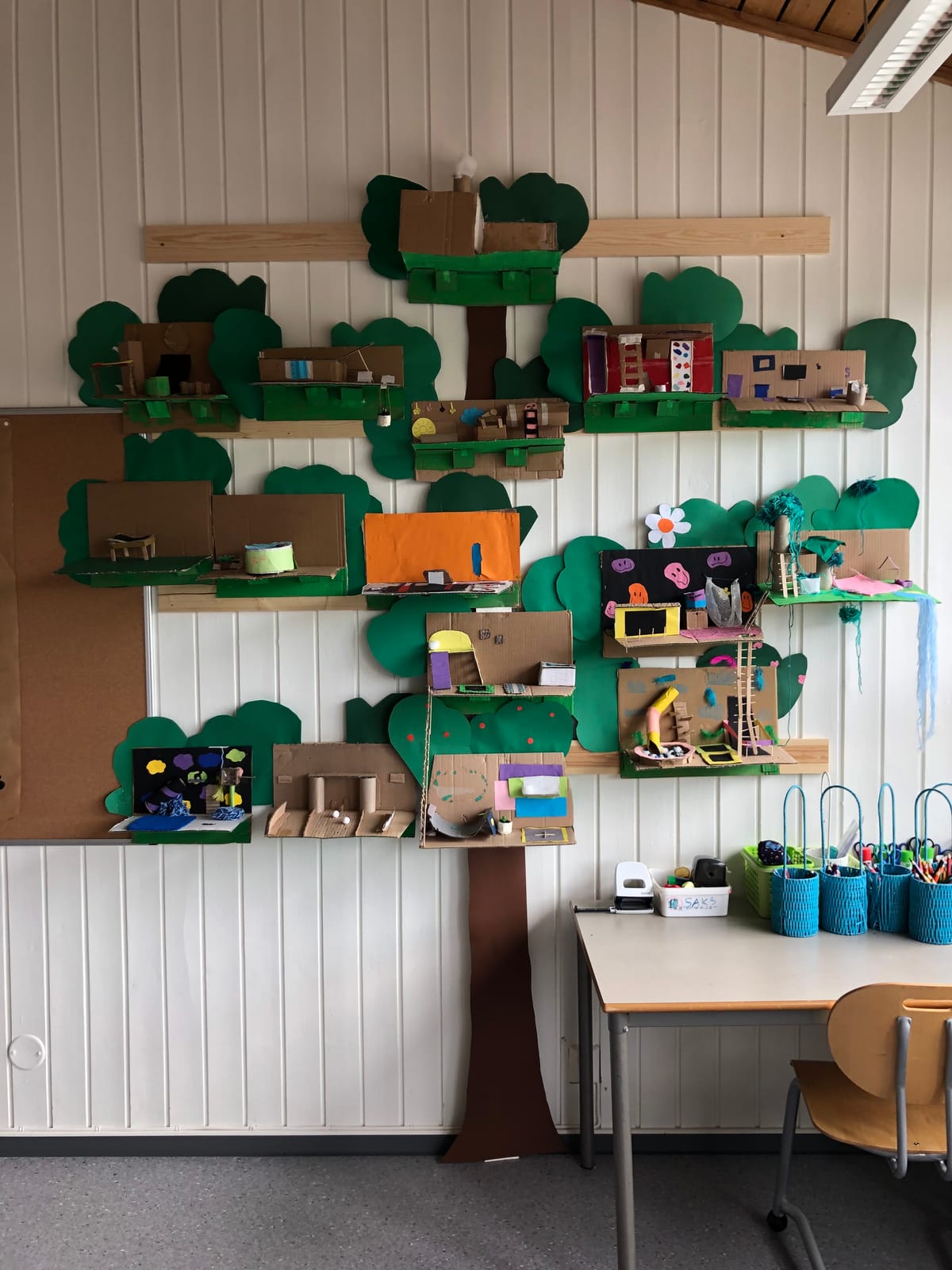
In the days of at-home shopping and lots of packaging, cardboard is one craft supply you’re likely to have on hand. Save a few boxes, tubes, or inserts and you’re ready for crafting fun from the ultra-simple to complex.
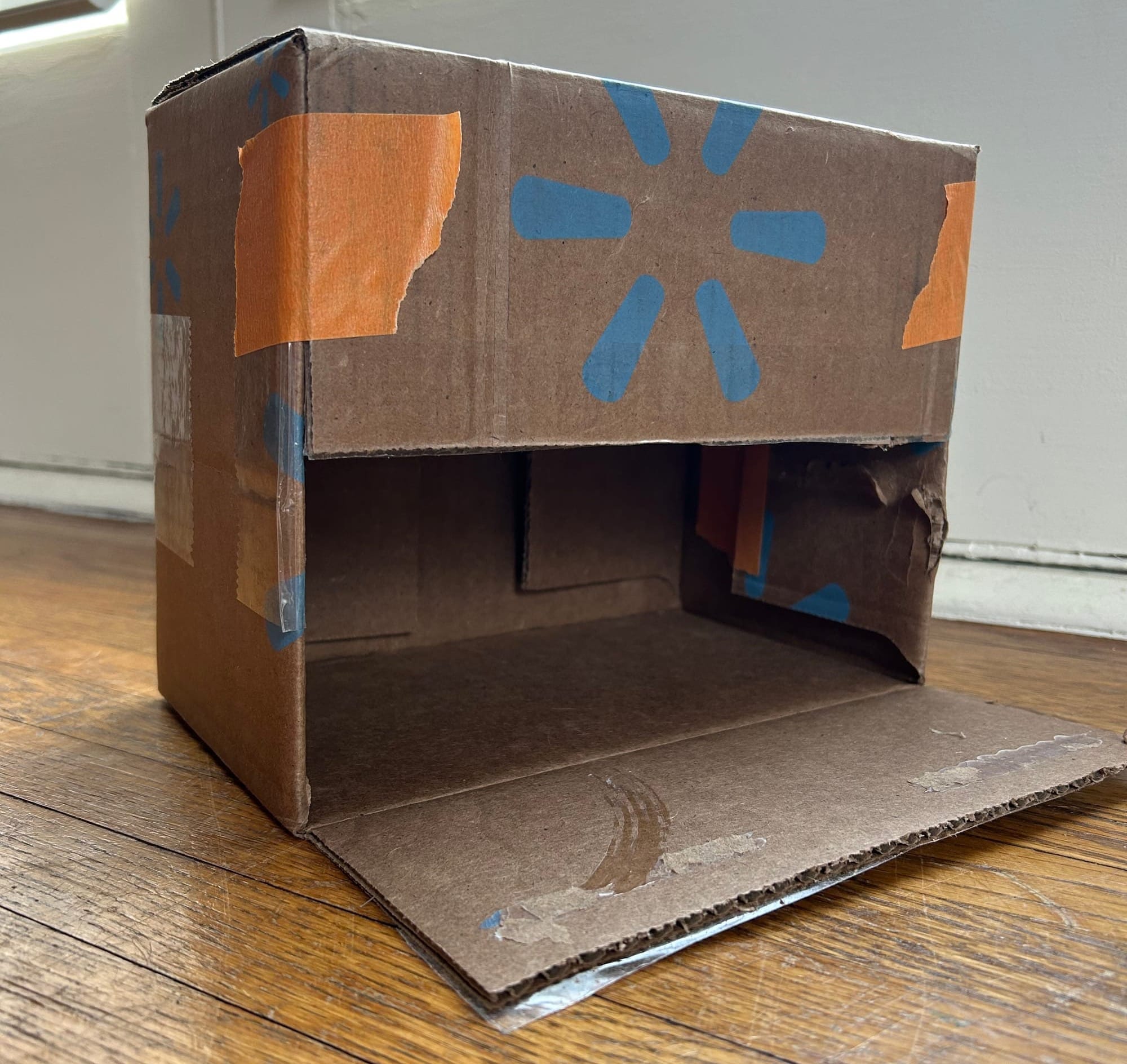
Some ideas for what to do with cardboard tubes or boxes can’t really be called crafting—more like creative re-use. For the under-5 set, cardboard tubes make great tunnels or slides—no cutting, coloring, or gluing needed. Just prop the tube up, and send a toy car, Fisher-Price person, or other small (but safe!) object down. Similarly, an open shoebox can become an instant house or garage. Or you can get slightly fancier and cut doors or windows into a closed box, or use the box flaps to make an easy-to-manage garage or firehouse door (see photo above).
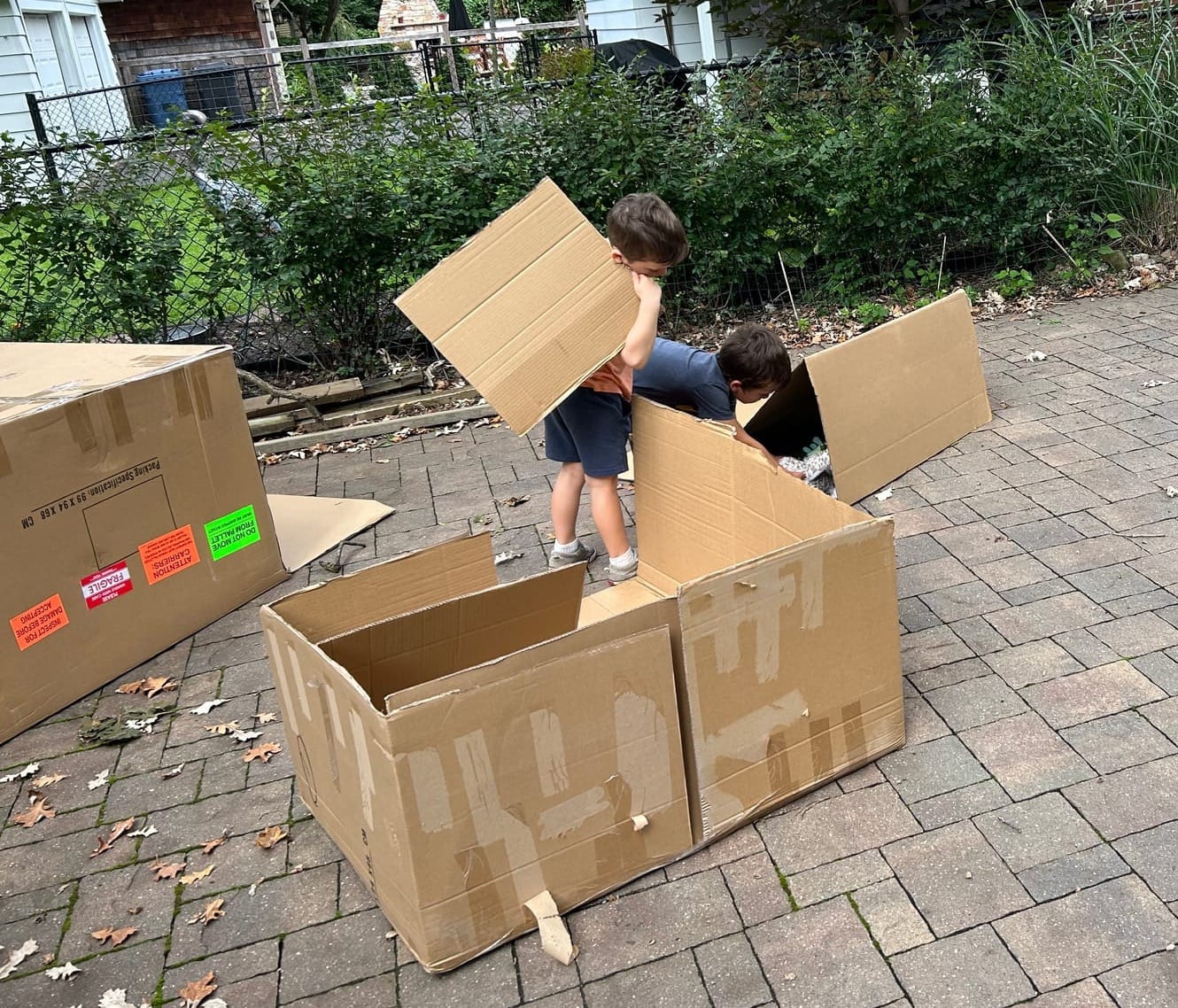
Really big boxes are of course terrific for making kid-size houses, hideouts, or homes for stuffies. We got big boxes from neighbors who had ordered lawn furniture—the grandkids didn’t even want doors or windows cut into them: They were perfect habitats as is (see photo above). (Please be sure to check inside big boxes for staples or other protruding objects before letting the kids use them!)
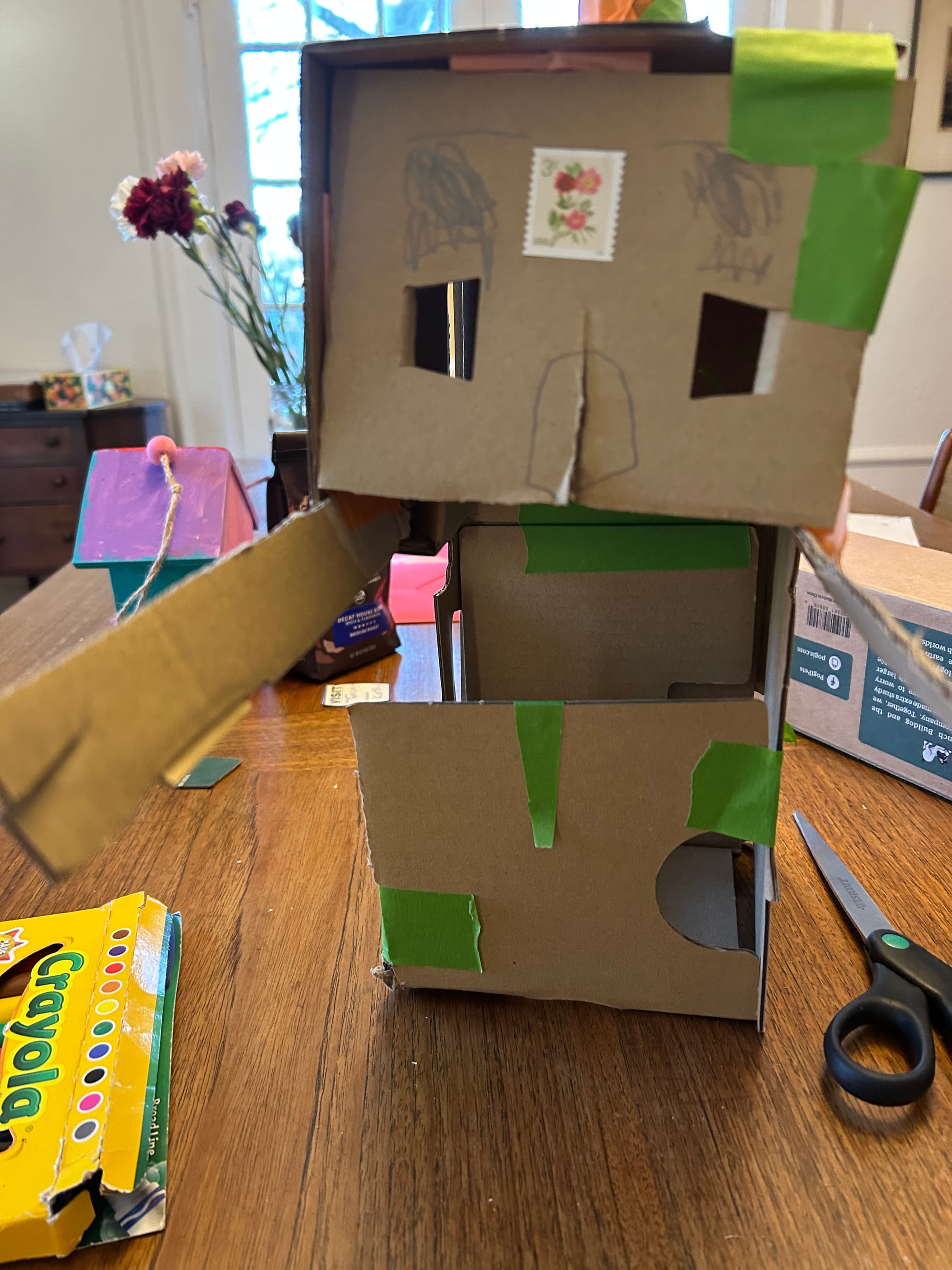
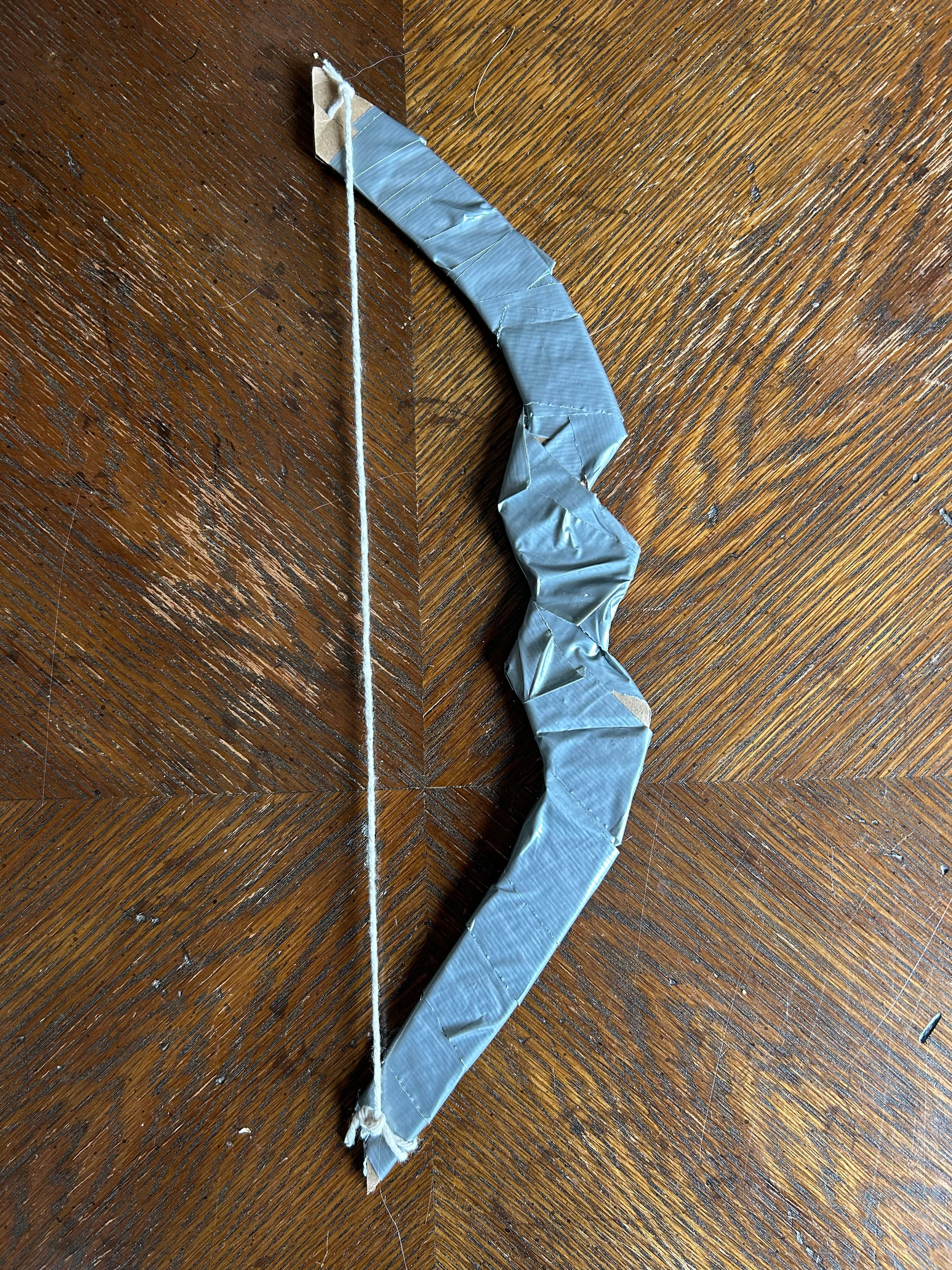
After the kids outgrow these simple re-uses, they can start to use cardboard to build their own toys. Recent projects in our house, from the imaginations of our kindergarten-age grandchildren, include a bow (liberally wrapped in duct tape), and a robot (liberally “glued” with green masking tape; see photos above). As you can see, neither of these is sophisticated or sturdy—the bow is too flexible to shoot an arrow or anything else (thankfully), and the robot is seriously jerry-rigged. But no matter! In the children’s imaginations, these are a bow and a robot. Plus it was fun making them.
With intermediate-level projects, like the bow and robot, kids often need help working out their vision, in large part because cardboard is very hard to cut. As the child’s helper, the grandparent can learn from the child where they want the robot eyes, what shape bow they want, and so forth, and do what the child can’t to realize their goal. Sturdy scissors are a good tool for cutting, but they take some muscle to use and aren’t very exact. An Exacto blade or utility knife (plus gloves!) can help—but wow, do you need to careful with those tools. I wouldn’t use them near our grandkids (they tend to get their hands in the way), but Grandpa has used a utility blade to help with some big cardboard projects while I have kept an eye on the little ones.
Another kind of intermediate-level project is to provide cardboard pieces pre-cut to various sizes that the children can use, assemblage style, to create whatever they want. (See above re cutting.) Adding in a few other objects can add to the possibilities—pipe cleaners, coils from a used-up notebook, some old wires—possibilities abound!
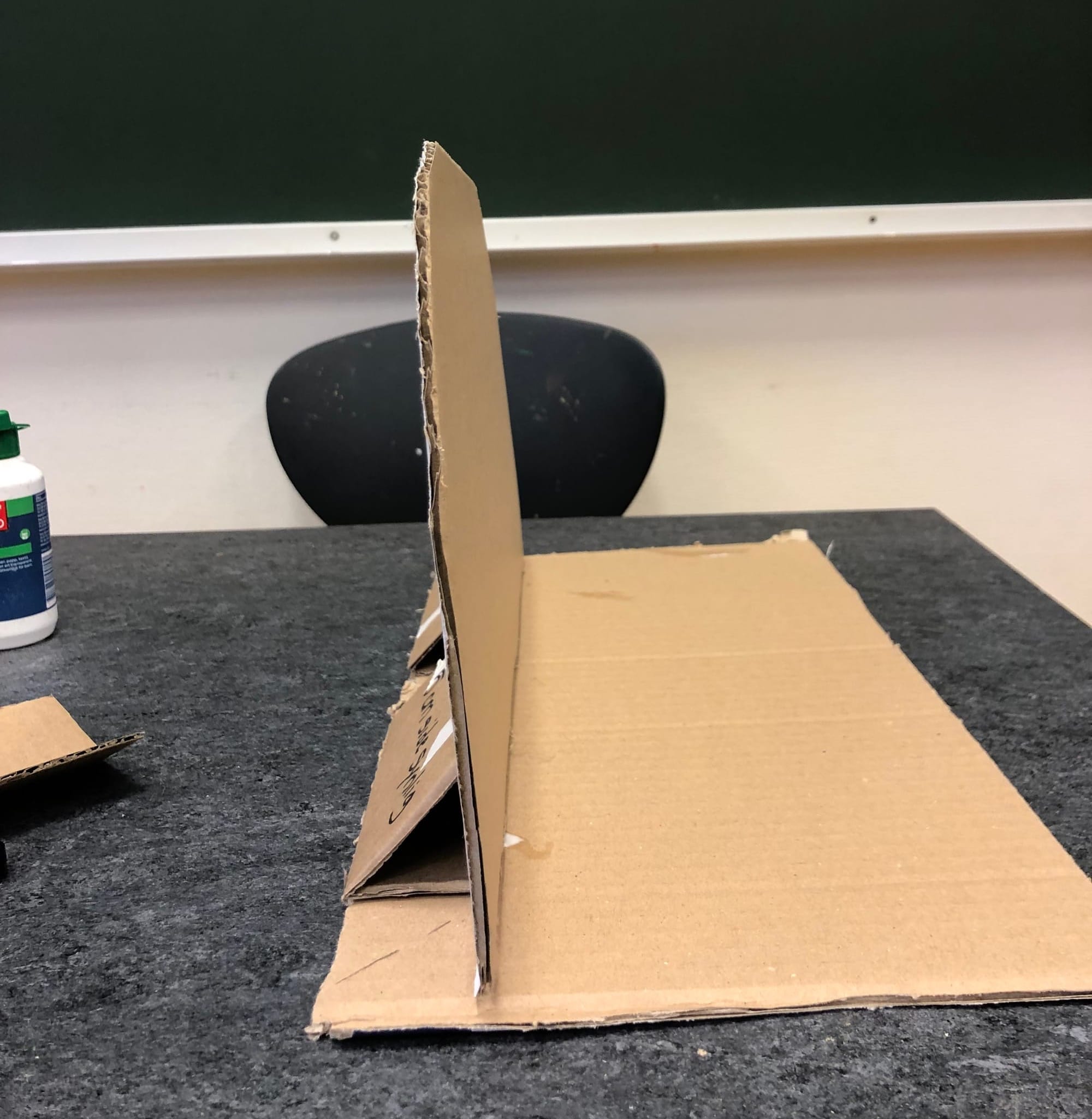
As the kids get older and more capable/safe using big scissors, they can strike out on their own. One project my sister Sarah Comfort’s middle-school students enjoyed was to make rooms or resources for their own 13-Story Treehouse (see photo at top). Individuals or small teams first made a base for their level of the treehouse (see photo above). Glue or tape can be used to hold the base together; if glue, use clothespins to stabilize it as the glue dries. Inside each level, the children used more cardboard, construction paper, and bits of fabric to craft what they wanted in their exciting story of the treehouse. While you’d need a group or a lot of time and patience to complete the full project, adapting the project to a few kids—or even one—wouldn’t be hard. Mostly, the adaptation would involve celebrating a less ambitious creation. (Or, further afield, illustrating a different book.)
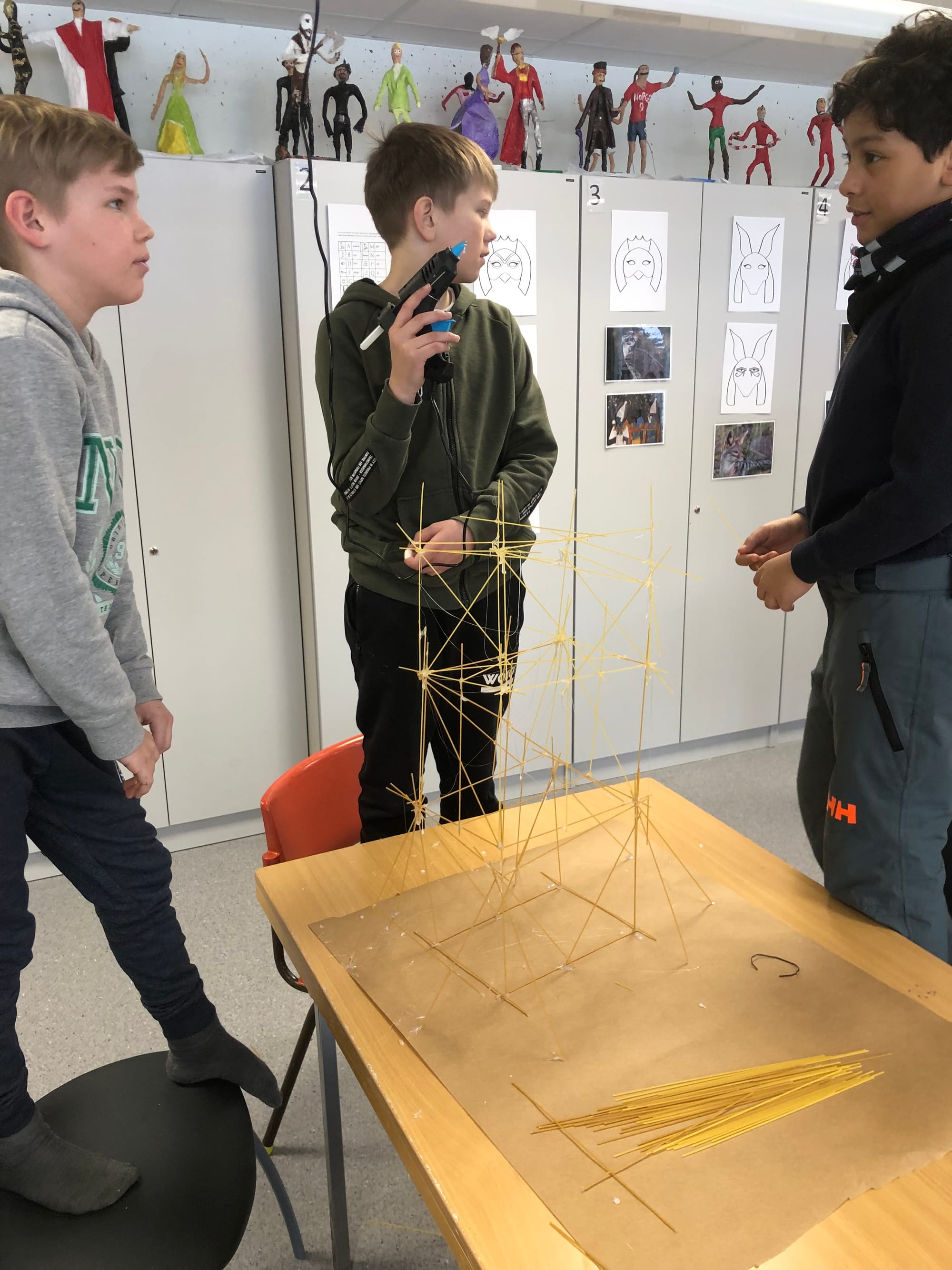
Another fun project for older kids, especially those with an engineering bent, is to build a tower with spaghetti noodles (see photo above). Here, cardboard is featured only as the base. This project does need an extra piece of equipment: A glue gun. So you’ll have to be sure your grandchildren are ready to work safely around hot glue (potential burns! Eye hazard!) before you try this. But once they are ready, endless variations on this theme are readily available. (Hmm…what would a rotini tower look like?)
Now I’d better get crafting with the grandkids, so I can get the cardboard stash out of our dining room!